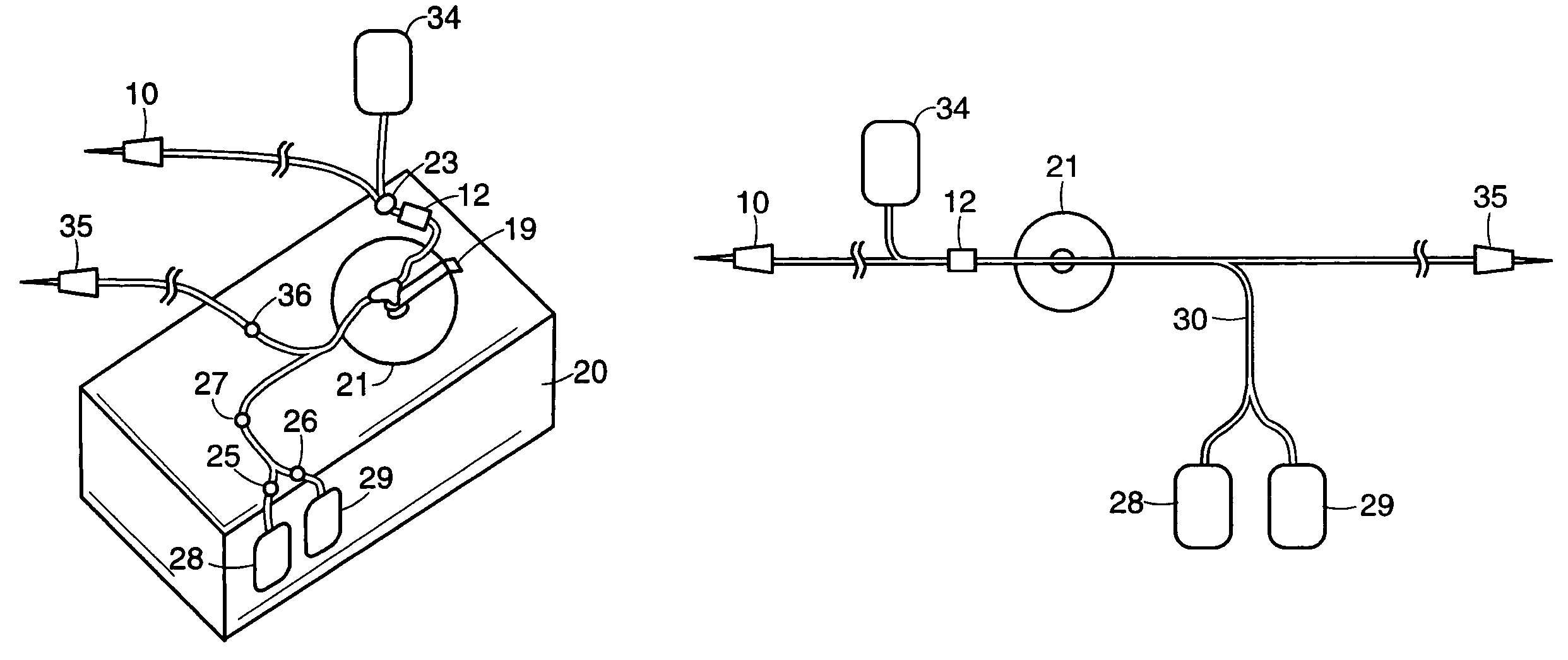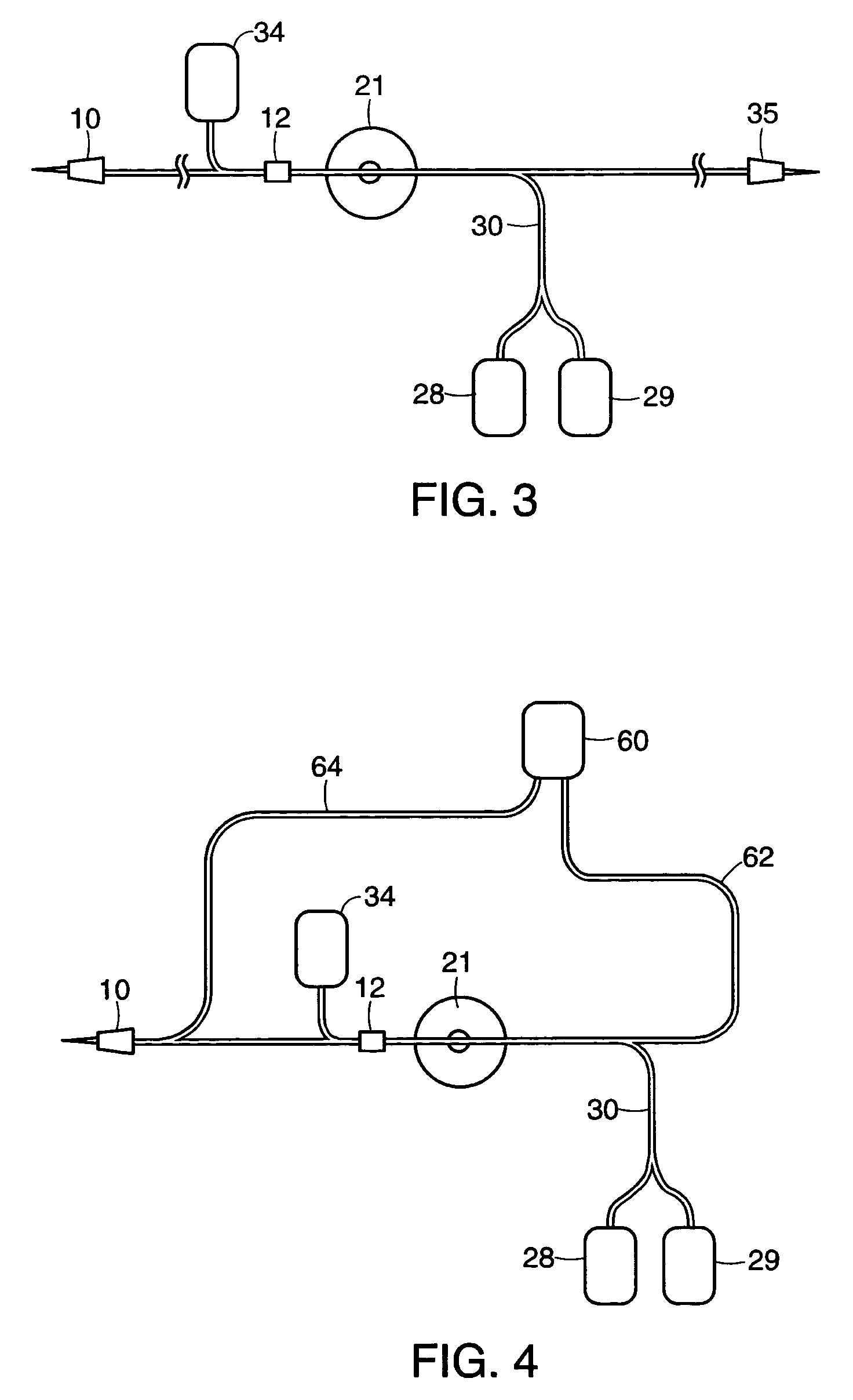System and method for processing blood
a technology of system and method, applied in the field of system and method for processing blood, can solve the problems of large rotor diameter, large extracorporeal volume, complicated setup and use, etc., and achieve the effect of reducing the need for human intervention and simple us
- Summary
- Abstract
- Description
- Claims
- Application Information
AI Technical Summary
Benefits of technology
Problems solved by technology
Method used
Image
Examples
Embodiment Construction
[0029]FIG. 1 shows an embodiment of a system according to the present invention. The system includes a disposable set (such as the one shown in FIG. 3) and a control unit that controls the disposable set. The disposable set includes an inlet port 10, e.g., a cannula, which may act as a connector for attachment to a shunt or other arrangement for permitting whole blood to enter the disposable set from the donor. Tubing connects the various components of the disposable set. The whole blood passes through some of the tubing and flows into the centrifuge rotor 21 mounted in a control unit 20. A filter 12 is located in the tubing between the inlet port 10 and the rotor 21. In preferred embodiments, this filter 12 is a white blood cell (WBC) filter that filters white blood cells from the whole blood; however other types of filters may be utilized, such as a course filter used when collecting blood shed during surgery (for example, as shown in U.S. Pat. No. 6,251,291, entitled “Reservoir-a...
PUM
| Property | Measurement | Unit |
|---|---|---|
| volume | aaaaa | aaaaa |
| volume | aaaaa | aaaaa |
| gas pressure | aaaaa | aaaaa |
Abstract
Description
Claims
Application Information
 Login to View More
Login to View More - R&D
- Intellectual Property
- Life Sciences
- Materials
- Tech Scout
- Unparalleled Data Quality
- Higher Quality Content
- 60% Fewer Hallucinations
Browse by: Latest US Patents, China's latest patents, Technical Efficacy Thesaurus, Application Domain, Technology Topic, Popular Technical Reports.
© 2025 PatSnap. All rights reserved.Legal|Privacy policy|Modern Slavery Act Transparency Statement|Sitemap|About US| Contact US: help@patsnap.com



